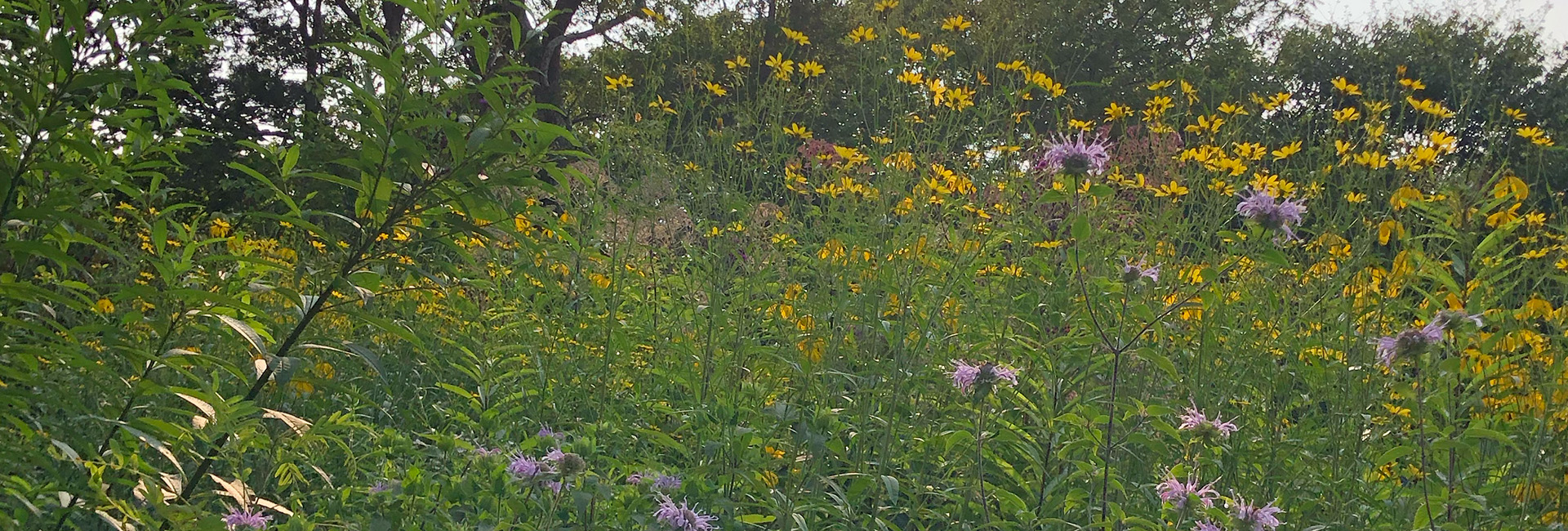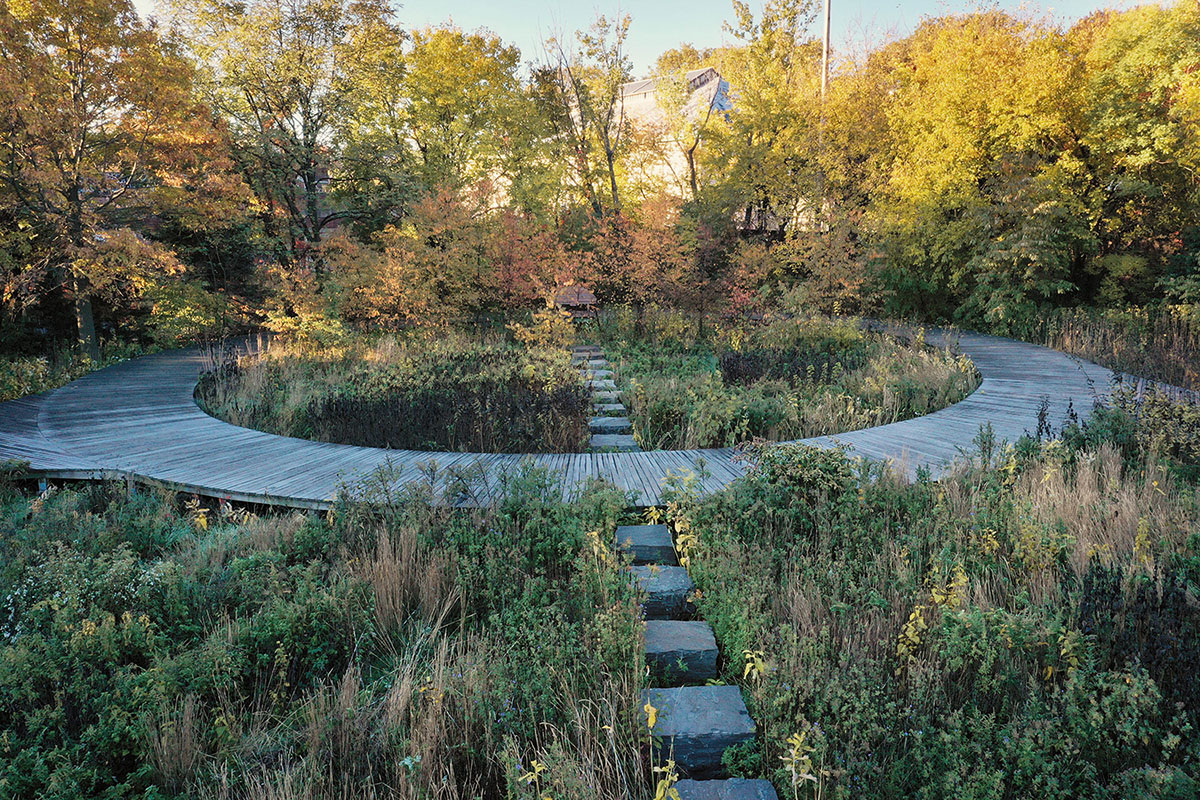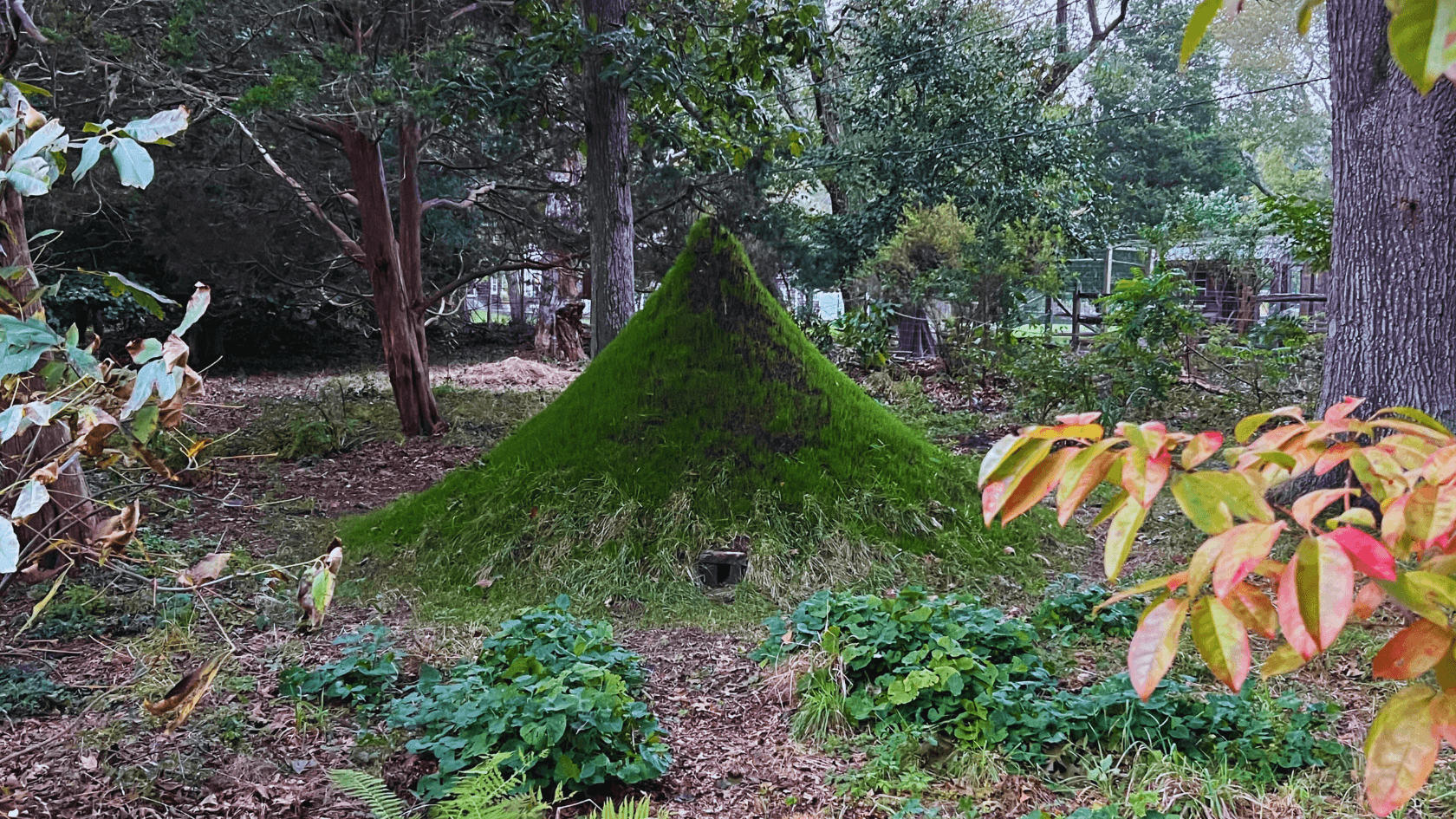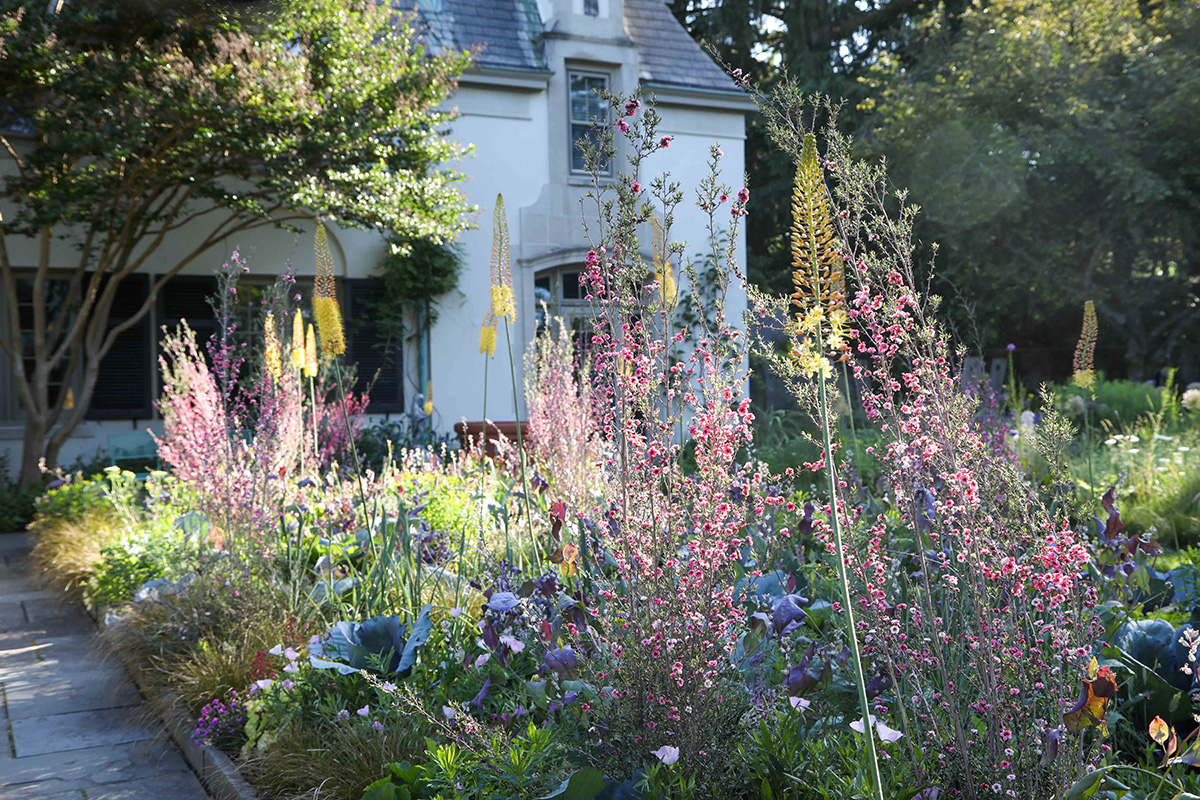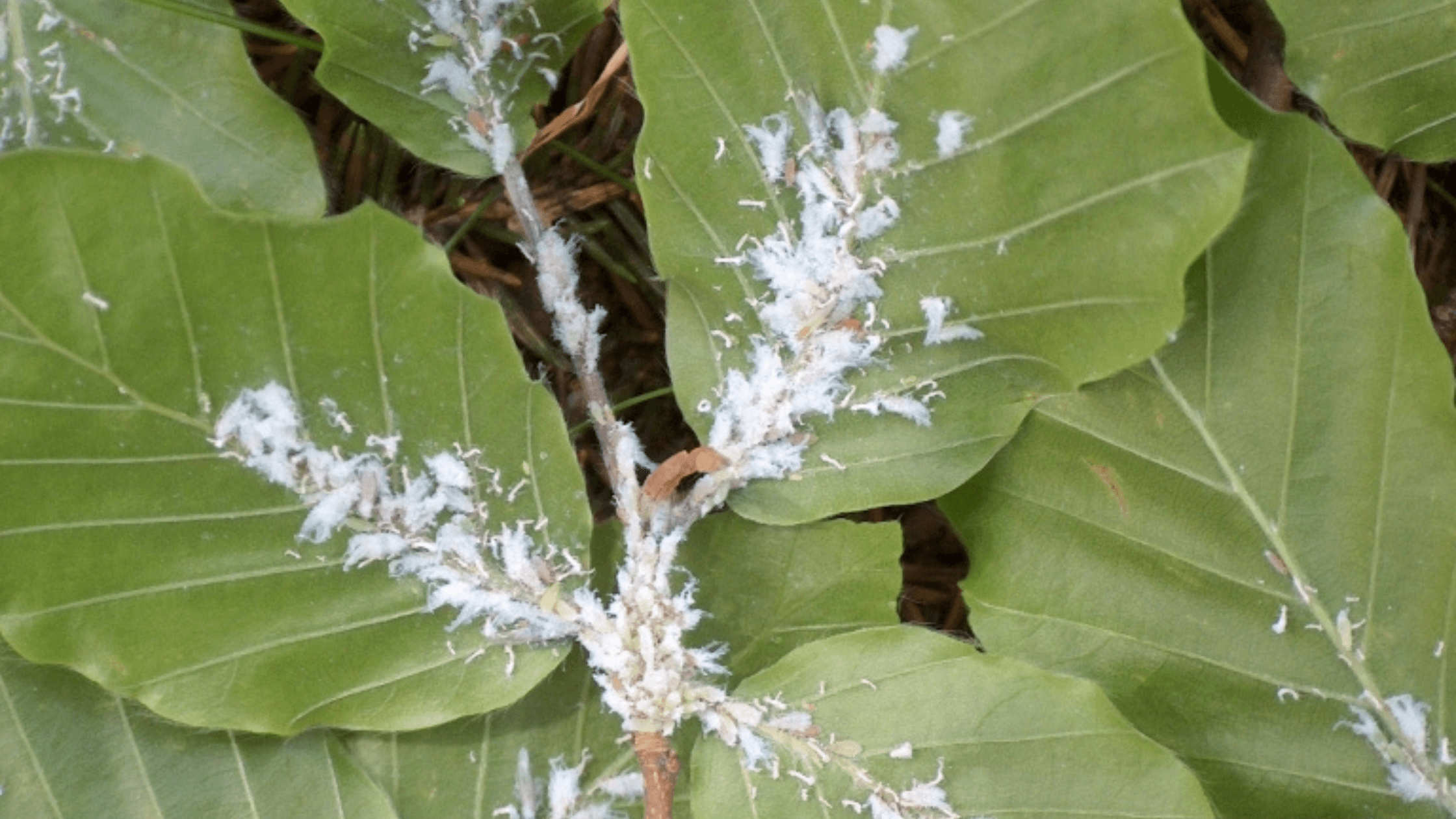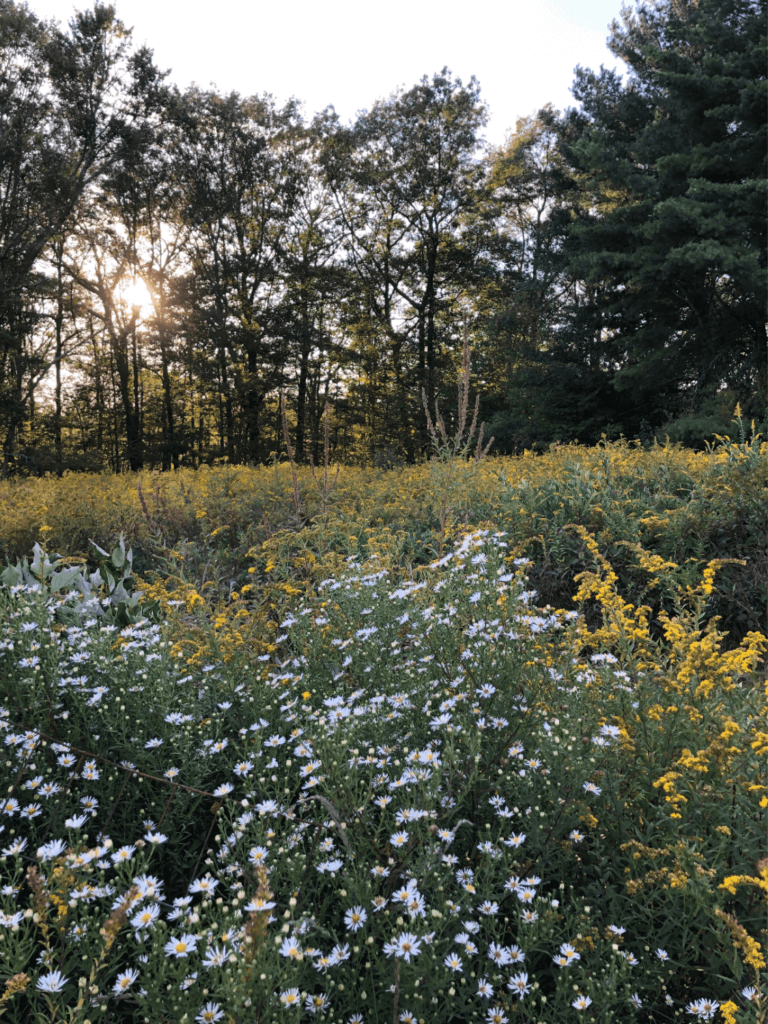
This is part of a series with Gardenista, which ran on September 21, 2023.
After weeks of hot, muggy weather, the temperatures in the Northeast have cooled and we’re beginning to see the signs of fall—apple picking, here we come! Years ago, conventional wisdom at this time of year had us all putting “the garden to bed.” We’d clip, throw away, tidy nature up so the garden looked like a living room before a party—everything just so. But we now know better. So much of what we thought was trash is actually treasure—for flora and fauna. In our latest dispatch from Perfect Earth Project, founder Edwina von Gal shares her wisdom on what we can do now to make our gardens thrive for all living things.
Don’t cut back perennials and grasses
Leave them during the winter where they’ll provide seeds for birds, shelter for insects and other animals, and look sculptural during the winter. Goldfinches, cardinals, grosbeaks and other songbirds like to dine on the seeds of sunflowers, asters, echinacea and other native flowers, so don’t deadhead these blooms once the flowers have faded. Wait until spring to make your cuts when cavity-nesting insects, like native yellow-faced, leaf-cutter, and carpenter bees, as well as some moths and wasps, are looking for hollow stems to start their broods. You’ll know the time is right when you start seeing these insects buzzing about. Xerces Society recommends snipping stems in a variety of heights—from eight to 24 inches above ground—to entice different types of insects. And leave the clippings on the ground where they will decompose and nourish the soil. The new growth will cover it all up.
The one thing you do want to cut back, though, is invasive plants. Hack them to the ground before and cover with layers of cardboard to smother them.
Also be careful not to let any pesky weeds go to seed. “You don’t want to leave them for the birds,” says von Gal. She removes any from her property and places them in a vinegar bath, before rinsing them and eventually adding them to her compost pile.
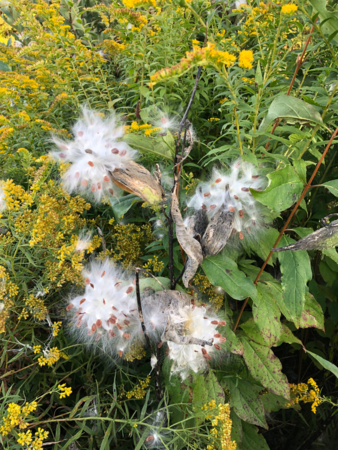
Milkweed pods opened to expose their downy seeds amidst a sea of goldenrod. In addition to eating goldenrod seeds, birds like Goldfinches will use milkweed floss to line their nests.
Clean up the Vegetable Garden
It’s good practice to clean up your vegetable garden. Remove spent plants, especially tomatoes, peppers, and other nightshades, which can harbor disease. “But don’t leave the soil bare,” says von Gal. “Plant a cover crop.” She likes field peas or pea shoots, which are also delicious to eat. “They do die back with frost, but they’ll form a mat which insulates the soil over the winter,” she says. “It’s like a nice warm blanket.” You can also cover beds with straw or dried leaves.
Plant native bulbs and your favorite spring ephemerals
While you’re digging in your tulips and narcissus, add some native bulbs to your garden, such as Camassia (there are species native to different regions of the U.S.) and Brodiaea or Triteleia (a western spring-blooming bulb).
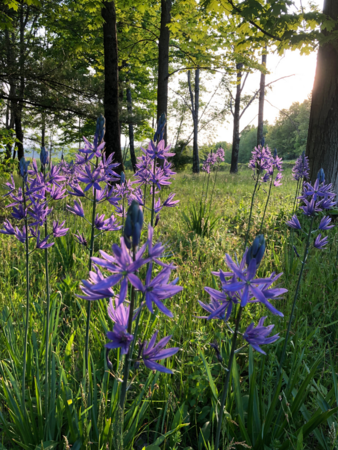
Camassia are native to the U.S. and are frequented by native bees and other pollinators.
Fall is also an excellent time to plant spring ephemerals. You’ll be happy you did when those first native bleeding hearts, bloodroot, and trillium pop up in early spring after a long winter. Planting now helps the roots get established, giving them a head start for spring. Von Gal also recommends adding a plant stake when you place new herbaceous plants, especially if starting with tiny plugs. Winter is long and it’s easy to forget what went where. A stake helps keep track of them in the spring, so they don’t accidentally get weeded out.
Leave the Leaves and Other Biomass
Gas-powered leaf blowers are noisy and spew incredible amounts of pollution into the air (According to the California Air Resources Board, a commercial gas-powered blower for one hour produces the same amount of emissions as driving a sedan 11,000 miles.), and did I mention that they’re noisy? They’re also unnecessary.
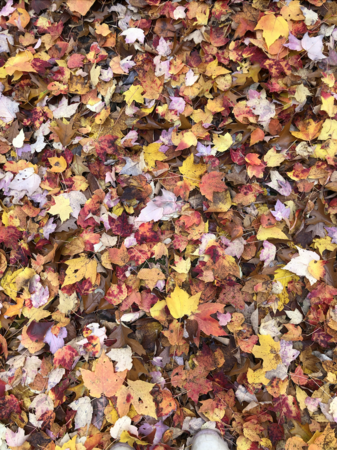
Dried leaves are valuable in the garden. Don’t send them to the landfill.
Leave the leaves! You’ve probably heard the phrase before recently, and with good reason. Fallen leaves are vital for a healthy landscape. They provide necessary habitat for insects. Moths and butterflies, for example, overwinter in leaf litter beneath trees and in garden beds. Leaves also decompose, providing free food for your soil biome. If you need to move them from pathways, don’t bag them up and send them to the landfill, rake them into your garden beds or compost them.
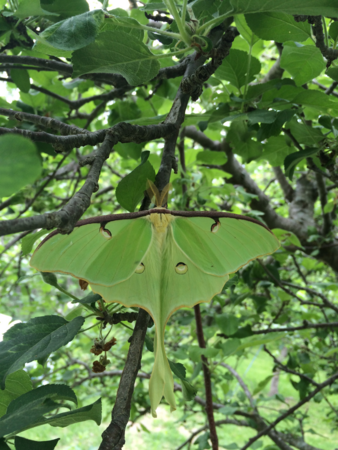
Months and butterflies, like the ethereal Luna Moth which weaves leaves into its cocoon, overwinter in leaf litter beneath trees.
Gather any branches that have fallen and start building a habitat pile. (Read more about how to make one in last month’s Perfect Earth post.)
Overseed your lawn
At Perfect Earth, we recommend reducing your lawn as much as possible: Expand your perennial beds, turn turf into meadow, grow more native shrubs and blooms for a habitat garden. The less lawn you grow, the better for the living world around you. But for the remaining lawn you do have, it’s wise to seed it every fall. “It’s always good to bring in a new generation,” says Von Gal. “Or else your lawn ages out.” To overseed, von Gal mows the existing lawn much shorter than normally advised, about 1 to 1.5 inches tall (instead of 3.5 or higher), then she uses a sharp iron rake to scratch the surface. “In heavily trafficked areas where the soil is compacted, stick a fork in the ground and wiggle it around,” she says. “Overseed and you’re done. Your lawn will reestablish a good cover for the winter.”
Clean and store your garden tools
Before storing them for the winter, clean and dry all your garden tools. Swipe a thin layer of oil, like camellia oil, over them for extra protection and to help prevent rust. “I also don’t leave any water wands or pump sprayers in the garden shed, says von Gal. Instead, she drains and stores them in a basement or garage. “They seem to last longer if they don’t freeze,” she says.
